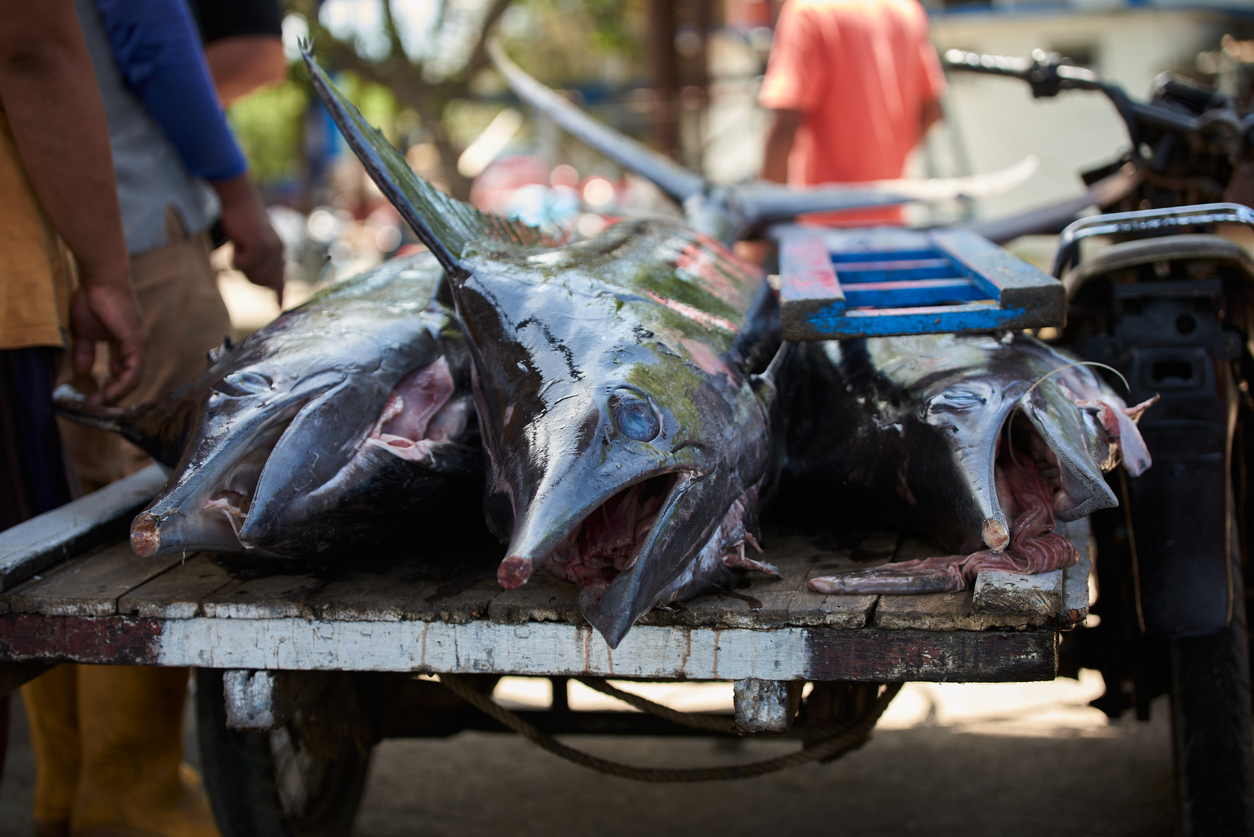Sailfish Price Guide: How Much Does a Sailfish Cost?
Sailfish Price Guide: How Much Does a Sailfish Cost?
Are you ready to dive into the world of luxury sportfishing? If so, get your sea legs ready because today we’re setting sail on a journey to discover the price range of one of the most coveted catches out there – the magnificent Sailfish! Whether you’re a seasoned angler or simply curious about these majestic creatures, join us as we explore their worth in this comprehensive Sailfish Price Guide. From jaw-dropping tales of epic battles to insider tips for scoring your own trophy fish, this blog post is bound to reel you in and keep you hooked until the very last line. So grab your fishing hat and let’s set sail on an adventure that combines passion for sport with insights into pricing – all aboard our virtual yacht towards discovering just how much a Sailfish really costs!
Introduction to Sailfish and their popularity in the fishing world
Sailfish, also known as Istiophorus platypterus, are a highly sought after fish species in the fishing world. They are known for their impressive size and speed, making them a thrilling catch for anglers of all levels. Sailfish can be found in tropical and subtropical waters around the world, with popular hotspots including the Pacific Ocean, the Indian Ocean, and the Caribbean Sea.
These magnificent creatures have captured the attention of both recreational fishermen and commercial fisheries alike. In fact, they are one of the most popular game fish targeted by sport fishermen due to their strength and acrobatic displays when hooked. Sailfish also hold significant economic value as they are harvested for their meat and fins.
One of the reasons why sailfish have gained such popularity in the fishing world is because of their unique physical characteristics. They have an elongated body that is covered in shimmering blue-gray scales with splashes of iridescent silver and gold. Their most distinctive feature is their long dorsal fin, which runs almost the entire length of their body like a sail – hence their name.
In terms of size, sailfish can grow up to 11 feet long and weigh over 200 pounds on average. However, there have been reports of larger specimens reaching up to 14 feet in length! This makes them not only a challenging catch but also an impressive sight to behold when reeled in.
Factors that influence the price of a sailfish:
The price of a sailfish can vary greatly depending on various factors. In this section, we will discuss the main factors that influence the cost of a sailfish.
1. Location: The location where the sailfish is caught plays a significant role in its price. Sailfish are found in different parts of the world, and their price can be affected by factors such as local demand, availability, and fishing regulations. For example, sailfish caught in popular sportfishing destinations like Florida or Costa Rica may be priced higher due to high demand from tourists.
2. Size: The size of a sailfish also has a major impact on its price. Generally, larger fish command higher prices because they provide more meat and are considered more desirable for sportfishing purposes. A smaller sailfish may be cheaper but still offer an enjoyable fishing experience.
3. Seasonality: The time of year when the sailfish was caught can also affect its price. During peak season when there is an abundance of sailfish, prices may be lower due to increased supply. On the other hand, during off-peak seasons when there is limited availability, prices tend to be higher.
4. Method of catch: Sailfish can be caught using various methods such as trolling or live bait fishing. Fish that are caught using sustainable methods such as hook-and-release techniques or handline fishing tend to have a higher price tag due to their eco-friendliness and conservation efforts.
– Size and weight
Size and weight are important factors to consider when it comes to purchasing a sailfish. These majestic creatures can vary greatly in size, with the average adult sailfish measuring between 5-9 feet in length and weighing anywhere from 60-100 pounds. However, there have been recorded instances of sailfish reaching lengths of up to 11 feet and weights exceeding 200 pounds.
The size and weight of a sailfish will not only affect the price but also determine its suitability for certain types of fishing. For example, if you are planning on targeting smaller species such as tuna or mahi-mahi, a smaller sailfish may be more appropriate. On the other hand, if you are looking for an adrenaline-pumping challenge and want to go after larger game like marlin or swordfish, then a bigger sailfish would be your best bet.
In terms of pricing, the larger the sailfish, the higher the cost will typically be. This is due to several factors such as supply and demand, as well as the difficulty involved in catching and handling larger fish. Generally speaking, a small juvenile sailfish can cost anywhere from $500-$1,000 while a full-grown trophy-sized specimen can fetch prices upwards of $10,000.
Another important factor to consider is whether you want a live or mounted (taxidermy) sailfish. A live fish will obviously require specialized equipment such as tanks and transport containers which can add additional costs.
– Location and availability
When considering purchasing a sailfish, one of the important factors to consider is the location and availability. Sailfish can be found in various locations around the world, but their availability may vary depending on certain factors.
Geographical Location:
Sailfish are primarily found in tropical and subtropical waters, with their distribution spanning across all major oceans. Some of the well-known hotspots for sailfish include off the coast of Florida, Costa Rica, Mexico, and Panama in the Atlantic Ocean; and off the coast of Peru, Ecuador, and Chile in the Pacific Ocean.
In addition to open ocean waters, sailfish can also be found near islands or along continental shelves where there is an abundance of bait fish. They tend to prefer warm waters with temperatures ranging between 70-80°F (21-27°C).
Availability:
The availability of sailfish can depend on several factors such as seasonality, weather conditions, and commercial fishing practices. In some areas like Central America and Mexico’s Baja Peninsula, sailfish are available year-round due to favorable climate conditions. However, in other areas such as Florida or Hawaii, they may only be available during certain times of the year.
Weather patterns also play a significant role in determining their availability. Strong winds or rough seas can make it difficult for fishermen to target sailfish effectively.
– Demand and competition
Demand and competition play a crucial role in determining the price of sailfish. The demand for this sport fish has been steadily increasing over the years, leading to a rise in its market value. This is due to factors such as its impressive size and speed, making it a popular catch among anglers.
One of the main drivers of demand for sailfish is its sought-after meat, which is considered a delicacy in many cultures. The firm texture and mild flavor make it ideal for various dishes, including sushi and sashimi. As such, there is a high demand for sailfish in countries like Japan, where seafood is an integral part of their cuisine.
Moreover, the popularity of sports fishing has also contributed to the surge in demand for sailfish. With more people taking up this recreational activity, there is an increasing need for challenging and exciting catches like sailfish. The thrill of reeling in one of these magnificent creatures has attracted many avid anglers from all around the world.
The growing global demand for sailfish has also led to fierce competition among fishermen and seafood suppliers. Countries like Costa Rica, Panama, Guatemala, Mexico, and Indonesia are renowned hotspots for sailfishing tournaments due to their abundant populations. As a result, these countries have established strict regulations on catching and selling sailfish to ensure sustainable levels.
– Method of catch (commercial vs. recreational)
The method of catch for sailfish can have a significant impact on its price. Generally, there are two main methods of catching sailfish – commercial and recreational.
Commercial catch involves fishing for sailfish with the intent of selling them for profit. This is usually done by large-scale commercial fishing companies using specialized equipment such as longlines, purse seines, and gillnets. These methods often result in a higher yield of sailfish, which can drive down the cost per fish.
On the other hand, recreational catch refers to fishing for sailfish as a leisure activity rather than for commercial gain. Recreational fishermen typically use smaller boats and rod-and-reel setups to target individual fish rather than large schools. This approach results in a lower yield of sailfish but allows for a more sustainable catch as it minimizes bycatch (unintended capture of non-target species).
The method of catch also affects the quality of the sailfish being caught. Commercially caught fish may undergo extensive handling and processing before reaching markets, potentially impacting their freshness and flavor. In contrast, recreational fishermen tend to handle their catch gently and quickly release any unwanted or undersized fish, resulting in fresher and higher-quality fish.
Average prices for different sizes of sailfish:
Sailfish is a highly coveted game fish among anglers for its impressive size, speed, and acrobatic jumps. It’s no surprise that many fishing enthusiasts are curious about the cost of this majestic creature. In this section, we will provide you with an overview of the average prices for different sizes of sailfish.
Before diving into specific price ranges, it’s important to note that sailfish prices can vary greatly depending on various factors such as location, seasonality, and market demand. However, based on data from the International Game Fish Association (IGFA) and other industry sources, here is a general breakdown of the average prices for different sizes of sailfish:
1. Small Sailfish (Less than 60 inches)
Small sailfish typically weigh between 30-50 pounds and measure less than 60 inches in length. These young and relatively smaller fish are usually priced at around $8-$10 per pound in countries like Mexico and Costa Rica where they are abundantly found. In areas with lower supply or higher demand, such as Florida or Hawaii, small sailfish can fetch up to $15 per pound.
2. Medium Sailfish (60-80 inches)
Medium-sized sailfish range from 60-80 inches in length and weigh approximately 50-100 pounds. They are considered mature adults and are often targeted by experienced anglers for their challenging fight.
– Smaller sailfish (less than 50 lbs)
When it comes to sailfish, size plays a significant role in determining its cost. Smaller sailfish that weigh less than 50 lbs are typically priced lower than their larger counterparts. This is because smaller sailfish are considered juvenile or immature and have not yet reached their full potential size.
Smaller sailfish can range in price from $10 to $25 per pound, depending on the market and location. In most cases, these fish are caught using trolling techniques rather than more expensive methods like live bait or kite fishing. As a result, the cost of smaller sailfish is usually lower compared to larger ones.
Another factor that influences the price of smaller sailfish is its age. The younger the fish, the lower its value as it has not yet fully developed its unique features and characteristics. As a result, many fishermen prefer to catch mature adult sailfish for their distinct looks and fighting capabilities.
However, there are also some benefits to purchasing a smaller sailfish. For one, they tend to be less intimidating for novice anglers who may feel overwhelmed by handling a large fish. Additionally, smaller sails can be easier to transport due to their size and weight.
But just because they are smaller does not mean they lack quality or taste. Smaller sailfish still offer an excellent dining experience with firm flesh and mild flavor that pairs well with various recipes.
– Medium-sized sailfish (50-100 lbs)
Medium-sized sailfish, ranging from 50 to 100 lbs, are a popular choice among sport fishermen due to their size and strength. These sleek and powerful fish can put up quite a fight when caught, making for an exciting fishing experience. In this section, we will discuss the factors that affect the price of medium-sized sailfish and provide you with a general idea of how much you can expect to pay for one.
The cost of a medium-sized sailfish varies depending on several factors such as location, season, and method of catch. The most significant factor that determines the price is the demand for these fish in a particular area. For example, if you are looking to catch a medium-sized sailfish in Florida during peak season, you can expect to pay more compared to catching one in less popular fishing destinations.
In general, the average cost of a medium-sized sailfish ranges from $20-$30 per pound. This means that a 50 lb sailfish could cost around $1,000 while a 100 lb sailfish could cost up to $3,000 or more. However, keep in mind that these prices are not set in stone and can vary significantly based on market conditions.
Another factor that affects the price of medium-sized sailfish is the method used to catch them. Some fishermen prefer using traditional hand-line methods while others opt for modern techniques like trolling or fly-fishing.
– Larger sailfish (over 100 lbs)
Larger sailfish, also known as the “grander” sailfish, are highly sought after by sport fishermen for their impressive size and strength. These majestic creatures can reach lengths of up to 11 feet and weigh over 100 lbs, making them a prized catch in the sport fishing world.
However, catching a larger sailfish is no easy feat. It requires skill, patience, and a bit of luck. As such, the cost of a larger sailfish can be significantly higher compared to smaller ones.
The price of a larger sailfish varies depending on several factors such as location, seasonality, and demand. In general, locations with abundant fish populations and active sport fishing industries tend to have lower prices for larger sailfish.
For example, in popular fishing destinations like Costa Rica or Mexico’s Baja Peninsula where large numbers of sailfish can be found year-round, the average price for a larger sailfish ranges from $500 to $800. However, during peak seasons or tournaments when there is high demand for these trophy fish, the prices can skyrocket up to $1,000 or more.
In less frequented areas such as remote islands or off-the-beaten-path destinations where access is limited and competition is low, prices for larger sailfish may be higher due to their rarity. Anglers may have to pay anywhere from $700 to $1,200 for a chance at catching one of these magnificent creatures.







Comments are closed.